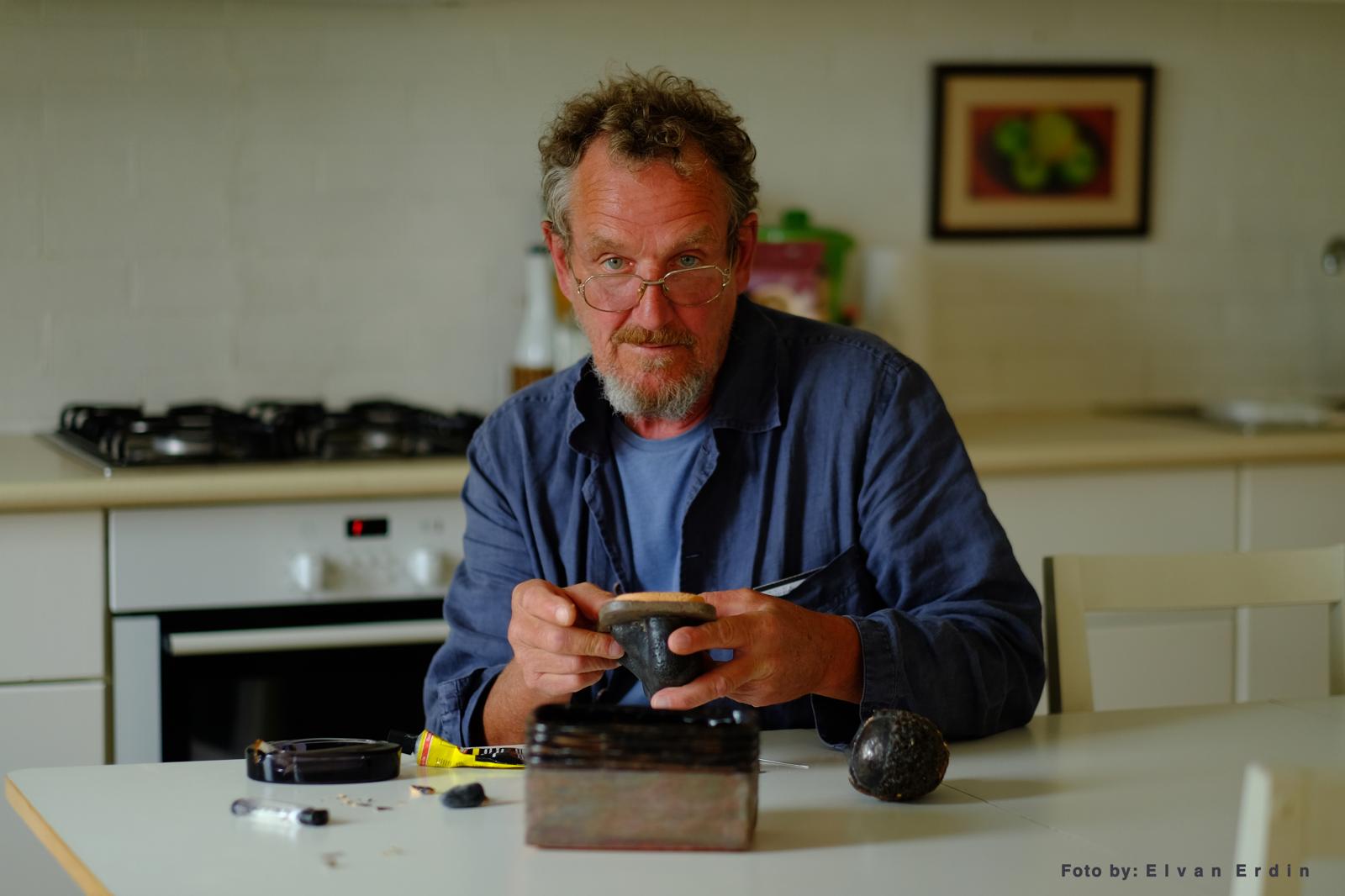
Tez – Parallel Universe Exhibition will be open to visitors between August 12-22 at Armonia Bodrum Houses Chapel.
TEZ
(1954-2024)
Tez, a British citizen of Welsh origin, was born in Nicosia, Cyprus in 1954. Between 1975 and 1980, he lived in Paris, where he made a living restoring antique furniture. During this period, he became acquainted with the technique of wood carving and started to produce his first sculptural walking sticks. After returning to London, he studied sculpture at Croydon College, Faculty of Art & Design and graduated with a Diploma in Fine Art in 1985. In the same year, Don’t worry dear, we won’t become matchsticks was included in Art in Ruins (The Crypt, St. George’s Church, London), the first exhibition of Our Wonderful Culture, an artist initiative founded by Hercules Fisherman that embraced a radical, inclusive gallery approach.
Between 1986 and 2000, he worked as a stage designer at The Fridge, an important center for electronic music, alternative culture and the LGBTQ+ community, founded by punk pioneers Andrew Czezowski and Susan Carrington in Brixton, South London.
He was a key figure in the vibrant community of the legendary Pullens Buildings, where he lived and played a central role in the campaign to save the 19th-century blocks from demolition. Later, he led the restoration of Fountain House in Crystal Palace, London, working closely with his team.
In 2013, he moved to Turkey, establishing a workshop first in Istanbul and later in Bodrum. Accompanied by his dogs, he has become an environmental flâneur — a traveling artist who transforms waste and scrap materials collected from his surroundings into ironic and original sculptures.
In addition to his sculptures, he was nicknamed “Tez’ll fix it” among his friends because he found solutions to everyone’s problems with his creative intelligence and practical solutions.
In the catalog of his graduation exhibition at Croydon College, he expressed his production approach with the following words:
“I like turning scrap materials into things because it is a stance that flips the idea that modern objects (and people) are seen as worthless and insignificant through the ‘disposable’ mentality, when in fact they often have a unique identity and beauty of their own.”
The artist diligently maintained this approach to his work and life until his death on December 31, 2024.
